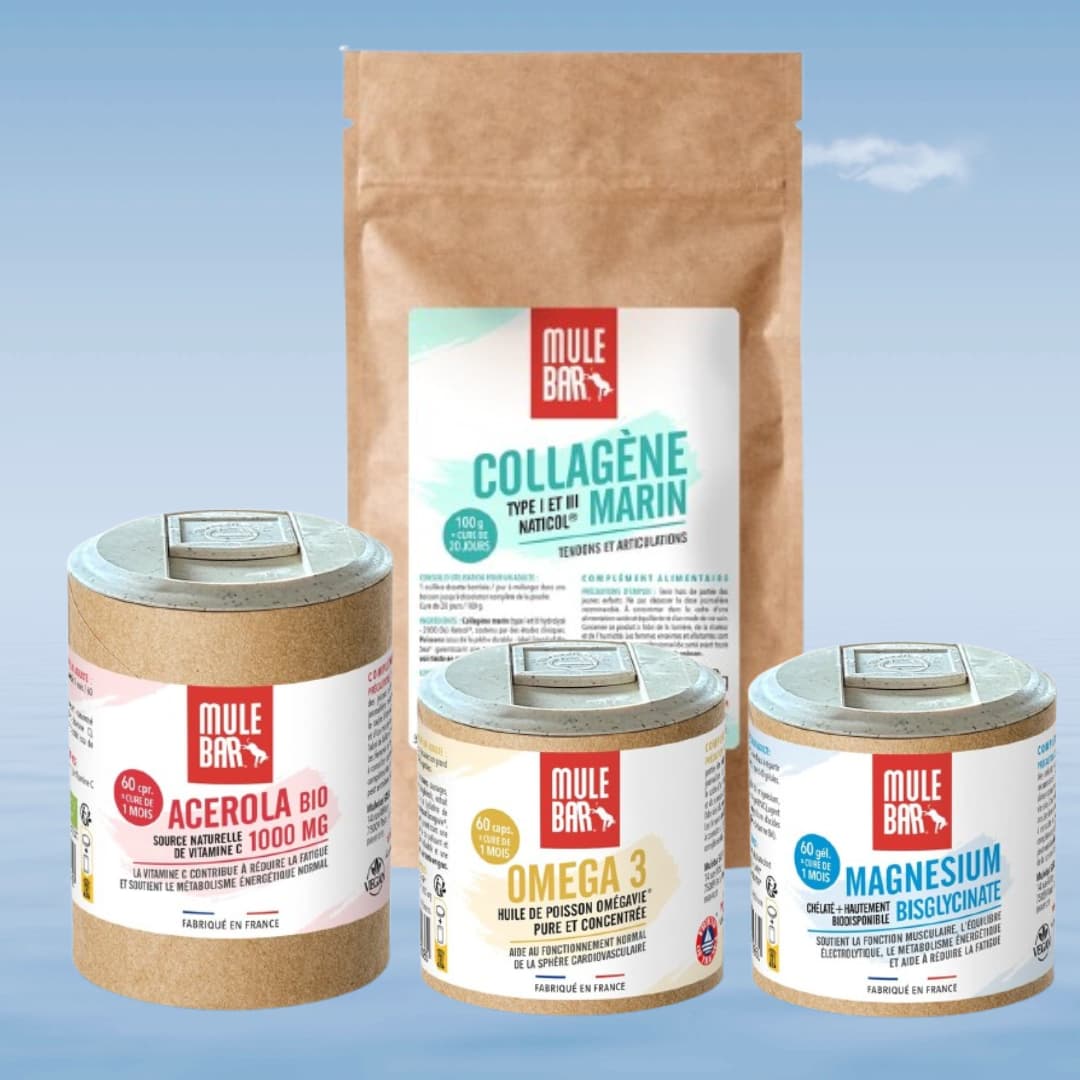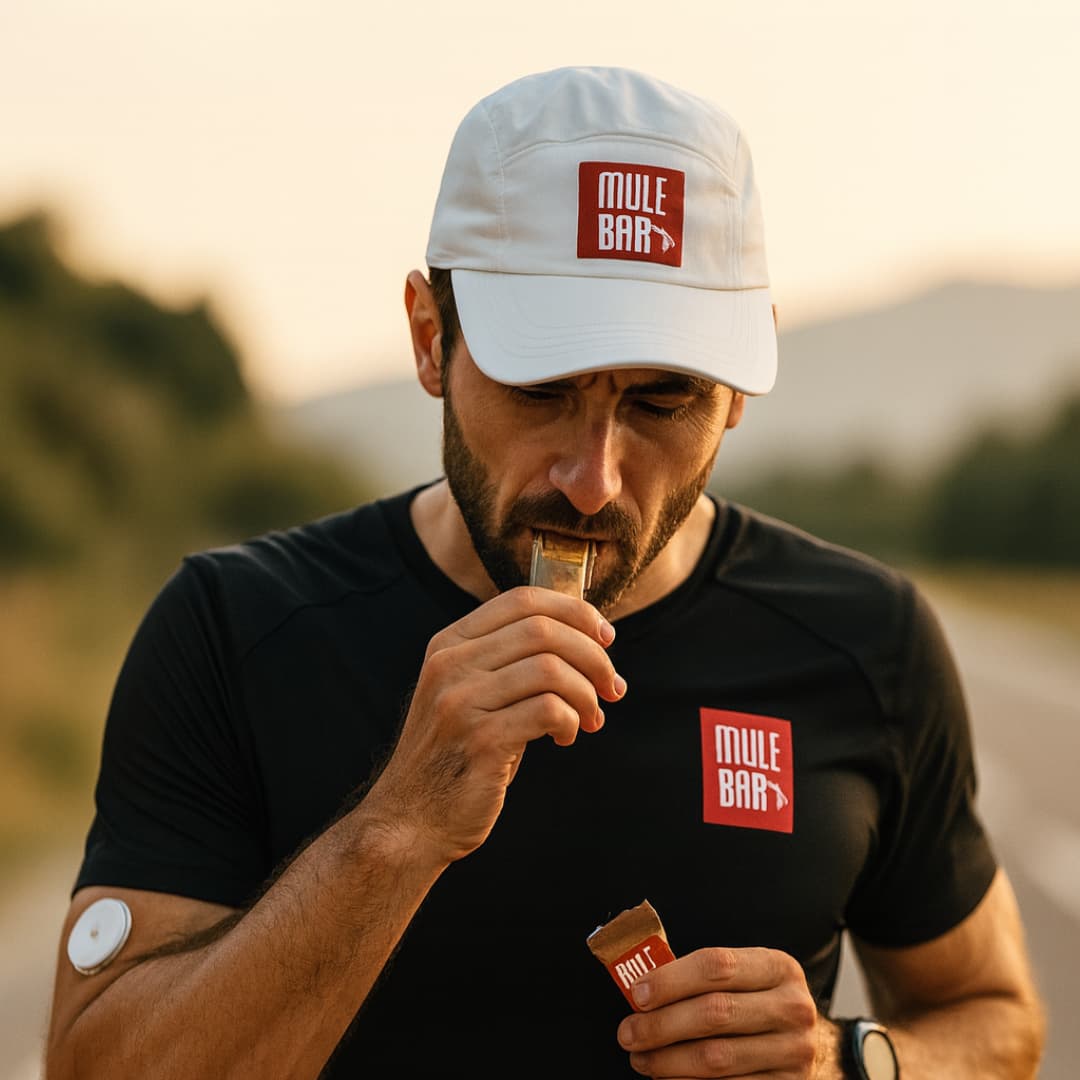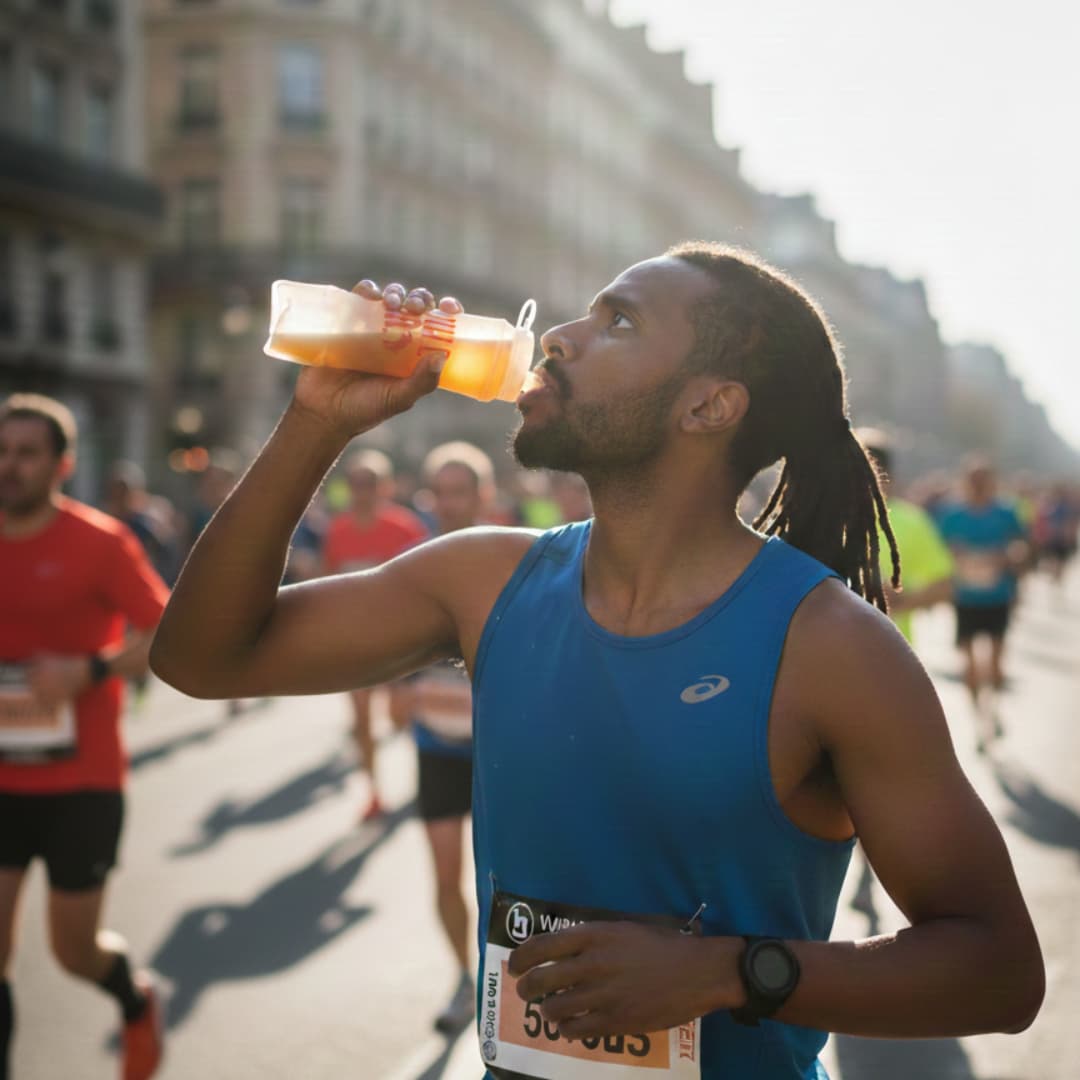If you're a diabetic athlete, discover how to optimize your nutrition to better manage your blood sugar while boosting your performance. This guide explains how to adjust your carbohydrate intake, choose the right isotonic drink, monitor your blood sugar control, and recover properly after exercise—all to help you balance exercise and health with complete peace of mind.
The different types of diabetes
Diabetes is a disease in which sugar (glucose) remains too high in the blood because the body no longer manages insulin well. Insulin is a hormone produced by the pancreas that helps glucose enter cells to be used as energy.
There are 3 main types of diabetes:
Type 1 diabetes
-
The pancreas no longer produces insulin at all. Without insulin, glucose remains in the blood. Blood sugar levels are very high, causing fatigue, thirst, and rapid weight loss.
-
It is an autoimmune disease: the immune system destroys the cells that produce insulin.
-
Often occurs in children or young adults.
-
Requires lifelong insulin injections.
Type 2 diabetes
-
The pancreas still produces insulin, but the body is resistant to it (insulin resistance). This is the most common (90% of cases).
-
Appears mainly in adults, often linked to an overly rich diet, lack of physical activity, overweight or heredity.
-
It is often controlled first by diet, exercise, then sometimes medication or insulin.
Type 3 (gestational) diabetes
-
Appears during pregnancy, as the mother's hormones make insulin less effective.
-
Often disappears after delivery, but increases the risk of type 2 diabetes later.
-
Requires strict monitoring to avoid complications in mother and baby.
Diabetes, sport and carbohydrates during physical activity
Regular physical activity improves insulin sensitivity, strengthens the heart, and helps better control blood sugar levels over the long term. But because exercise significantly increases energy expenditure and draws on glucose stores, it's crucial to adapt your diet to maintain good blood sugar balance while remaining efficient.
How many carbohydrates during exercise?
Carbohydrates are the primary fuel during moderate to intense exercise. Here are our recommendations:
- For 1 to 3 hours of activity : 30 to 60g of carbohydrates per hour
- Beyond 3 hours : Up to 90g per hour
Mix different types of carbohydrates (glucose, maltodextrin and fructose) for better absorption and fewer digestive problems.
Our practical advice:
- Split up your intake: Take 10 to 20g of carbohydrates every 15-20 minutes to avoid sudden blood sugar swings. Our Mulebar energy gels and energy compotes are perfect for this, as they have truly resealable caps with no risk of leaks.
- Example: 500ml of isotonic drink + an energy gel will provide you with approximately 50g of carbohydrates per hour.
- Ideal timing: Start eating after 45 minutes of exercise, then continue every 15-30 minutes.

Note: Always test your training nutrition strategy before a competition. Carefully record your intake, blood sugar levels, and how you feel—this is the best way to find what works for you as a diabetic athlete.
Hydration and Electrolytes for Physical Activity
Even mild dehydration (2% of your body weight) reduces your performance by 20% and disrupts your blood sugar levels. Drink 500 to 650 ml per hour in hot weather or during prolonged exercise. Don't forget electrolytes (sodium, potassium, etc.) which help restore the minerals you lose through sweating.
Isotonic drinks are particularly suitable: they provide carbohydrates and electrolytes. It's the perfect combination for good glycemic control during exercise.
Blood Glucose Monitoring and Safety in Sports
Our recommended protocol:
- Measure your blood sugar 15-30 minutes before exercise
- Check every 30-60 minutes during activity
- If your blood sugar drops below 90mg/dL: take 15-30g of fast sugar, wait 15-30 minutes before continuing
Some essential precautions:
- Wear a bracelet indicating your diabetes
- Warn your training partners
- Always carry with you: quick sugar, your blood glucose meter and your doctor's contact details
Important: Any changes to your insulin treatment must be approved by your medical team. This will allow you to continue your physical activity safely and enjoyably.
Carbohydrates and sports drinks for diabetes
Choosing the right sports drink has a direct impact on your digestion, performance, and blood sugar balance. Whether it's a hypotonic, isotonic, or hypertonic drink, each type is suited to specific exercise durations and intensities. Understanding these differences allows you to better manage your carbohydrate intake, adjust your insulin, and maintain regular physical activity without blood sugar imbalances or excessive fatigue.
Choosing the right drink for physical activity
Isotonic drinks, with their 6 to 8% carbohydrate concentration, have an osmolarity similar to that of blood. They quickly pass through the gastric barrier for optimal hydration. This characteristic allows for a regular energy intake while avoiding digestive upsets, making this drink the ideal choice for efforts lasting more than one hour. It facilitates glycemic management because the amount of carbohydrates remains simple to calculate and integrate into your treatment.
Our Mulebar range of isotonic sports drinks combines three sources of carbohydrates (maltodextrin, sucrose, and fructose) to maximize intestinal absorption and allow intakes of up to 90g/h during prolonged exercise. They also contain BCAAs to protect muscles, bicarbonates against acidity, and antioxidant vitamins (C, E, zinc) essential for maintaining your health during physical exercise.
Isotonic, hypotonic or hypertonic drink?
The carbohydrate concentration determines the absorption rate and therefore the optimal use of each drink: hypotonic (<4%) for rapid hydration during brief activities, isotonic (6-8%) for sustained efforts exceeding one hour, and hypertonic (>8%) mainly for recovery or preparation before a competition.
For a diabetic patient, this differentiation is particularly useful:
- Hypotonic drinks for yoga or gentle gym
- Isotonics for running or prolonged cycling
- Hypertonic only in post-exercise or preparatory phase
This gradual approach helps avoid blood sugar spikes, facilitates insulin adjustment and integrates seamlessly into treatment while optimizing athletic performance.
| Type of drink | Carbohydrate concentration | Ideal use | Diabetes benefits |
| Hypotonic | <4% | Efforts ≤60 min, light recovery | Fast hydration, low sugar intake |
| Isotonic | 6–8% | Efforts >60 min, moderate to intense | Hydration/energy balance, precise carbohydrate calculation |
| Hypertonic | >8% | Recovery, test day | Controlled glycogen reloading, post-exercise only |
Always take the time to read labels to determine the exact carbohydrate, sodium, and fiber content. Powdered versions offer more flexibility: you can adjust the dilution based on the outside temperature and your personal tolerance. Then, remember to accurately incorporate these carbohydrate intakes into your monitoring for even more precise blood sugar management.
Natural products and digestive tolerance
All our Mulebar products (bars, compotes, drinks) are made with natural ingredients, often organic and vegan. This requirement ensures better digestion, preserves your long-term intestinal health, and simplifies glycemic management—a major advantage for prolonged efforts where digestive comfort is crucial for performance.
Be careful, however, of potential allergens (peanuts, gluten, milk, etc.). Always test any new product during training to observe the glycemic response and adapt nutrition to the patient's treatment. This rigor will make glycemic management your ally for practicing your sporting passion with complete peace of mind.
Recovery, sport and carbohydrate control
The moments immediately following your physical activity represent a valuable opportunity to replenish your glycogen stores and stabilize your blood sugar. This metabolic window lasts approximately 30 to 60 minutes, while your body's heightened sensitivity can persist for up to two hours. To take full advantage of this window, implement a nutritional strategy combining carbohydrates, proteins, and electrolytes, thus optimizing post-exercise recovery and effectively preparing for your next workout.
Exploiting the metabolic window
Immediately after exercise, your muscles become particularly receptive to insulin and quickly absorb glucose and the amino acids needed to regenerate glycogen and muscle fibers. This increased sensitivity allows people with diabetes to reduce their insulin doses and prevent hypoglycemia, provided they carefully follow their doctor's recommendations.
- Carbohydrate Dosage : Consume between 1 and 1.2g of carbohydrate per kilogram of body weight per hour during the first three hours of recovery, which is 70 to 84g for a cyclist weighing 70kg.
- Protein intake : Include 20 to 40g of protein within thirty minutes of stopping your physical activity to limit muscle catabolism and promote fiber repair.
- Optimal ratio : Aim for a carbohydrate/protein ratio of around 3:1 to minimize blood sugar fluctuations and effectively support recovery.
- Essential electrolytes : Include at least 300mg of sodium and 300mg of potassium in your recovery drink to compensate for sweat losses and maintain muscle function.
Regularly monitor your blood sugar every thirty to sixty minutes, as increased insulin sensitivity maintains a risk of hypoglycemia for several hours after exercise. Carefully record these measurements, adjust your nutritional intake and treatment in collaboration with your healthcare team, and then gradually refine your post-exercise recovery strategy.
What carbohydrates after physical activity?
Immediately after your workout, choose medium- or high-glycemic index carbohydrates to quickly replenish your muscle and liver glycogen stores. Dried fruits like dates or apricots, compotes, and isotonic drinks are excellent sources of quickly available energy. Bars made with brown rice syrup and oat flakes complement this intake while providing fiber and micronutrients that are beneficial for your health.
To fully exploit the metabolic window, spread your intake over the first hour of recovery. For example, start with a sweet potato-orange-carrot energy compote providing 32g of carbohydrates, then 25 to 30 minutes later, add 20g of protein to maintain the optimal 3:1 ratio. This gradual approach helps limit blood sugar spikes and makes it easier to adjust your basal insulin or bolus doses depending on your treatment.

Planning for recovery with diabetes
Reconciling sports activities and type 1 or type 2 diabetes requires careful planning of your nutritional recovery. Always prepare your post-exercise snacks in advance: electrolyte drinks, easy-to-carry compotes, protein bars, and a quick source of glucose to cope with a possible hypoglycemia. This organization significantly reduces decision-making stress and guarantees optimal nutritional intake, thus safeguarding your health and effectively supporting each session of adapted physical activity.
To deepen your understanding of the role of glycogen in athletic performance and nutrition, check out our resource detailing the glycemic index, glycemic load, and proper reloading techniques: optimizing your stores while controlling your blood sugar .
Frequently Asked Questions
Is sport good for a diabetic?
Absolutely! Regular physical activity significantly improves insulin sensitivity and helps stabilize blood sugar levels in people with diabetes. Whether you have type 1 or type 2 diabetes, exercise also reduces cardiovascular risks. Be careful, however: before engaging in intense exercise, consult your doctor and a nutritionist. They will help you adapt your treatment and diet to avoid episodes of hypoglycemia during exercise.
Does diabetes affect athletic performance?
With good diabetes control, there's nothing stopping you from excelling in sports! Many diabetic athletes even perform well in demanding endurance disciplines. The key? Careful monitoring of blood sugar levels, adequate carbohydrate intake (especially before exercise), and careful adjustments to your treatment. A balanced diet—rich in fiber, fruits, vegetables, and protein—is equally crucial for maintaining stable glucose levels and promoting recovery.
Does blood sugar increase after exercise?
Yes, but it depends on the type of activity! After intense physical effort (sprinting, weight training, etc.), adrenaline can cause a temporary increase blood sugar levels by stimulating the release of glucose from the liver. This phenomenon, which is normal, simply requires increased monitoring. Conversely, moderate endurance activities (walking, cycling, etc.) generally lower blood sugar levels. The patient must then adapt their treatment, plan a carbohydrate snack, and carry rapid glucose with them in case of hypoglycemia.






Leave a comment
This site is protected by hCaptcha and the hCaptcha Privacy Policy and Terms of Service apply.